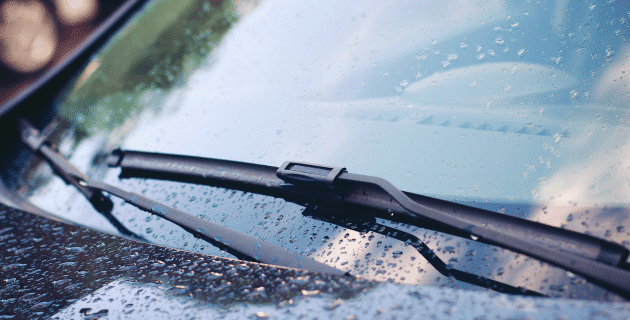
by California Casualty | Educators |
Your teachers and educational support professionals are at the forefront, expertly balancing student needs with administrative demands and navigating the educational landscape with grace and skill. They give their all, day in and day out, and you want to make sure they feel supported. Here’s how you can help cultivate a culture of fulfillment and growth.
1. Prioritize the physical and emotional well-being of your staff.
When your staff feels well mentally and physically, they are able to do their best work. On the flip side, when they are burnt out, they have trouble meeting the bare minimum. You can create a school culture that prioritizes mental and physical health.
-
- Tap into your staff’s reasons for going into education. Highlight the reasons during staff meetings and professional development. Remind them by celebrating their successes and supporting them through challenges.
- Encourage staff to practice self-care. Bring in self-care experts for professional development sessions. Organize an after-school yoga session. Provide healthy snacks in the faculty room. Create a library of digital resources on self-care.
- Reduce stressors that can lead to drama. Address issues sooner rather than later. Get rid of competitiveness. Set up teacher mentors. Facilitate an atmosphere of teamwork.
- Don’t overload teachers with responsibilities. Allow catch-up days where you don’t plan formal programming.
2. Be visible and available.
Supportive administrators are accessible and approachable. They are a common presence throughout the school. Faculty and staff have opportunities to interact with them on a daily basis.
-
- Walk the hallways during high traffic times. Be seen by students and staff. Engage them in conversation during recess and lunch.
- Make it a point to greet faculty and staff by name, so they know that you know who they are. Personally welcome new staff, including substitutes.
- Maintain an open-door policy at your office, or if you cannot, post times when you will have open-door office hours. Be accessible before and after school.
- Drop into the teacher lounge and ask how teachers are doing.
3. Respect educators’ time.
Educators and support professionals have a lot on their plate. There’s often more work than hours in the school day. Understanding that your staff’s time is valuable will help guide you in managing staff responsibilities and expectations.
-
- Submit meeting agendas at least 24 hours in advance. This will allow your staff to have time to review it so they can appropriately respond in a meeting.
- Do you have straightforward information to share at a meeting? Send an email instead. Just because a faculty meeting is on the calendar doesn’t mean you have to have one.
- Have a “ditch” meeting. Discuss the activities/responsibilities that can be eliminated. This will allow your staff to focus on priorities.
- Ask for staff input on professional development days. Work with them to schedule meaningful programming that helps them in their jobs.
4. Communicate effectively.
Good communication is important. It ensures that teachers and educational support professionals have the information that they need to get the job done. It also builds relationships and eliminates inefficiencies.
-
- Create a weekly schedule that goes to all staff. Email the schedule early on Monday morning with the most important information and documents hyperlinked. These can include department meeting reminders, agendas, school events, links for teachers to join a testing session, etc. (Pro Tip: Make it a Google doc and you can provide live updates as things change.)
- Add faculty birthdays at the bottom of the weekly schedule to celebrate your staff and their milestones.
- Build in time for peer collaboration. This type of communication gives teachers a chance to share best practices, and gives new teachers the chance to learn.
- Write a handwritten note to staff members to celebrate achievements and to thank them for their service.
5. Provide resources and tools.
Teachers repeatedly spend their own money for classroom supplies. Investing in high-quality curriculum and providing resources for classrooms goes a long way toward supporting teachers and staff.
-
- Find free resources and tools, and educator discounts, and regularly share them with your staff. Ask staff to do the same.
- Seek sources of funding for educational supplies and programs from grants, PTA fundraisers, community donations, etc.
- Work with the local library to borrow/access items from books to technology.
- Post classroom wish lists on the school website so parents and others may donate.
6. Support your teachers’ decisions.
One of the most difficult times for a teacher is when administrator support is lacking when they make difficult decisions on grading or behavior. When parents go over the teacher’s head to the principal, it’s important that the administrator supports the teacher’s decision. Siding with the parent undermines the teacher’s authority.
-
- Meet with the teacher privately to ascertain the extent of the complaint and the reasons that the teacher made the decision.
- Determine ahead of time whether any concessions can be made, with the teacher’s support.
- Meet with the teacher and parent and discuss the situation and possible resolutions.
7. Ensure evaluations are meaningful.
Teacher evaluations can be a source of stress but they don’t need to be. The ultimate goal is to help teachers maximize their effectiveness. Administrators and teachers can get the most out of them when they are done with understanding on both sides.
-
- Pre-game with the teacher. Share the evaluation tool. Discuss the upcoming lesson and what you’ll expect to observe. Ask the teacher if there’s anything that he/she wants you to pay special attention to.
- Send your completed evaluation as soon as possible following the lesson.
- Choose just a few high-impact points that the teacher can focus on for improvement. Provide concrete examples of what he or she can do.
- Make sure to mention the positives. Praise teachers for what they are doing right.
- Do not copy and paste from one teacher’s evaluation to another. Not only could it backfire, but each individual assessment also deserves its own evaluation.
8. Listen and incorporate feedback.
Good listening skills will go a long way in managing staff and helping meet their needs. Teachers and educational support professionals have a lot to share. Tap into their “inside track” as the educators on the front lines.
-
- Ask for feedback on everything from schedules to curriculum to discipline. Then, listen and take notes.
- Discover the “pain points”—the things that are not working well — so that the school may address them.
- Allow teachers to be part of the decision-making process and you will get their buy-in. You also will get some creative and practical solutions.
This article is furnished by California Casualty, providing auto and home insurance to educators, law enforcement officers, firefighters, and nurses. Get a quote at 1.866.704.8614 or www.calcas.com.

by California Casualty | Auto Insurance Info |
If your windshield wipers are leaving long streaks and making loud squeaks, they’re trying to tell you something. They’re ready to be replaced.
Your wipers are not meant to last forever. The rubbery blade wears down over time. Squeaks, streaks, and smears happen when the blades don’t make proper contact with the glass. That causes dangerous driving conditions and potential accidents when you can’t see clearly through your windshield.
You generally have to replace your wiper blades every 6-12 months. Look for these signs that your blades are ready for replacement:
• Worn edges
• Cracks, tears, and missing pieces
• Stiffness in the rubbery part (inability to flex)
• Squeaking or chattering
• Streaks on your windshield
If your wipers are leaving streaks but not making sounds, you can clean the blades, which are the rubbery part of your wiper. Dip a rag or paper towel into rubbing alcohol. Wipe it along the blades, and the windshield. This can help extend the life of your blades for another month or two before you have to replace them.
How to replace your wipers
Step #1: Get the right wipers for your vehicle.
Windshield wiper blades come in many different sizes so it’s important to get the right ones. Your vehicle may even use two different lengths of front wiper blades. (Don’t forget your rear one, too.) One way to find the right size(s) is read your car’s manual. You also can go to an auto parts store in person or online to get assistance. The online sites will often have you type in your car’s make and model.
Once you find the right size, you’ll have other choices to make. Conventional and synthetic rubber blades are usually the cheapest. They will break down over time with exposure to the sun’s UV rays. If you are looking for longer-lasting blades, consider silicone, which is more expensive. There are options for sturdy winter wipers, flat blades, and hybrid blades, too. The difference is that with the conventional kind, you can replace just the rubbery blade. With the others, you have to replace the whole piece.
Many national auto parts stores will install the wipers that you just bought there, sometimes for no additional charge.
Step #2: Get the wipers in position.
You’re ready to start the replacement. Turn the car on and give your windshield a squirt of wiper fluid to lubricate it. Then, turn on the wipers just so you can get them into position. When the two blades are pointed upward toward your roof, turn your car off. Get out of your car and pull the wipers forward so they’re standing upright at 90 degrees.
Step #3: Place a towel on the glass.
Wiper blades are spring-loaded. That means that they can snap back against the windshield. Once you expose the metal wiper arm, this could result in a cracked windshield. To protect against that, cover your windshield with towels. Alternatively, you could wrap the metal hook of the wiper arms with a rag once you detach the blades.
Step #4: Detach the blades.
There are two basic types of traditional wiper connections: tab and pin type. There is a slightly different installation process for each type.
Look for the spot on the wiper where the blade attaches to the arm. There may be a tab where the blade connects. If you don’t have a tab, you may have a pin-type connector. If in doubt, check your vehicle’s user manual for blade removal steps.
• For tab connectors, use your finger to push the tab outwards or inwards. As you push, grab the blade and pull it down parallel to the arm. You should be able to pull it all the way out. You may need to tug a bit if there’s built-up debris.
• For pin-type connectors, you will need to pull the tab up, and pull the pin out. Use a small flathead screwdriver to lift the connecting pin. You should then be able to slide the blade off.
Step #5: Install the new blades.
Remove the new blades from their packaging and then proceed depending upon the type of connection.
• For tab connectors, look for a tab suspended in the middle of a long rectangular hole. Slide the arm hook up and over the tab. Pull the blade up until you hear a snap.
• For pin-type connectors, look at the new blade and look for a small hole in the body. Pull the black tab up slightly. Align the hole with the pin on the wiper and it will snap into place.
Step #6: Clean the windshield.
You’ve got new wipers so you’ll want to make sure your windshield is clean, too. Lift the blades up so they are off of the windshield. Use automotive glass cleaner, a clean and dry microfiber cloth, and a little elbow grease. Alternatively, you can use water, dishwashing liquid, and a few drops of vinegar. Dry your windshield with a clean microfiber cloth. Put your blades back down and you’re ready to go.
If you just want to replace the rubber inserts
You can replace the entire windshield wiper assembly (as described above) or you can simply buy new blade inserts if they are available for your vehicle. This can save you money; however, it is a bit more complicated to replace just the rubber and may require tools. Consult your car’s manual for details.
Replacing wiper blades is part of good car maintenance. And as always, don’t forget to protect your vehicle with the right insurance for added peace of mind.
This article is furnished by California Casualty, providing auto and home insurance to educators, law enforcement officers, firefighters, and nurses. Get a quote at 1.866.704.8614 or www.calcas.com.

by California Casualty | Safety |
You’ve probably heard a lot about identity theft, but it could never happen to you, right? Unfortunately, it’s more common than you think. Every 22 seconds, someone has his/her identity stolen in the U.S.
You could be the next victim. Learn the signs of identity theft and the strategies to help protect your identity.
Types of Identity Theft
Identity theft happens when someone uses your personal information to steal from you. They can take over your personal accounts. They can ruin your credit. They can take out loans in your name, leaving you on the hook for thousands of dollars or more.
There are many types of identity theft. Here are some of the most common:
• Bank fraud
• Credit card fraud
• Employment fraud
• Tax-related fraud
• Government benefits fraud
• Insurance fraud
• Loan or lease fraud
• Medical services fraud
• Online shopping fraud
Watch for These Warning Signs
Identity theft can easily happen without you knowing it. Be on the lookout for signs that show someone is fraudulently using your information.
1. You do not recognize charges on your credit card or bank account. Check your credit card statement each month, or online more frequently if you feel you may be a victim of identity theft. If you see charges that you didn’t make, contact your credit card company. You can dispute those charges, and change your account number. Similarly, if you see withdrawals on your bank statement that you didn’t make, notify your bank immediately. While they may not be able to refund that money, they can put a hold on your account and open a new one for you.
2. You are getting calls from debt collectors. If you’re getting calls from debt collectors for a purchase you did not make, that’s a huge red flag. It’s possible someone made a purchase in your name. Get the information from the debt collector. Contact the fraud department of the creditor who says that you owe the debt. Request copies of the transaction. Dispute the charge. Close or change the account where the debt was originally charged, whether it’s a bank account or credit card.
3. You receive notifications of password changes you didn’t make. If you get a notification that you changed your password, and you didn’t make the change, take action right away. That means someone was able to access your account. Notify the institution. Change the initial password to something new. If you use that same password elsewhere, change it there, too.
4. You get texts with verification codes. If you get a verification code from PayPal or other services, that’s a sign that someone is using one of your personal accounts. Change your password immediately and contact the account provider.
5. Your credit score suddenly drops. Perhaps you’re denied a loan because your credit report shows unexpected problems. Or maybe you checked your credit score and it’s much lower than it was. Order a credit report to get detailed information. You can get a free report from the major credit bureaus: Equifax, Experian, and TransUnion. Then you can correct any inaccuracies for future reporting.
6. You’re missing mail and bills. Identity thieves sometimes use a change of address form to reroute your mail. That’s one way they can get personal information mailed right to them. If you notice that mail is missing, especially bills, contact those companies and make sure the address on file is the correct one.
7. You’re getting unfamiliar bills. If you’re receiving medical bills for services that you didn’t receive or bills for items you didn’t purchase, someone is pretending to be you. Contact the provider and let them know.
8. The IRS has more than one tax return in your name. This happens when someone files a tax return to get your refund. You will need to contact the IRS to resolve the situation. You can get a copy of the fraudulent return and take steps to protect your social security number in the future.
How to Protect Your Identity
Follow these steps to help prevent identity theft.
• Guard your social security number. Most places will ask for the last four digits only. Do not share the full number unless you are certain it is secure and safe.
• Watch out for phishing scams. Don’t respond to unsolicited calls or emails. Don’t click on links in those emails either. Never enter your personal information in response to an email.
• Keep close tabs on your billing cycles. If bills do not appear, you will know what is missing.
• Read your credit card statements and look for small charges, too. Scammers often start with a small test before making a big purchase.
• Create complex passwords for your accounts. Avoid using complete words and don’t use the same password for multiple accounts. Initiate 2-step verification for an extra layer of protection. Avoid storing passwords on your devices.
• If you bank online, install virus protection on your computer and mobile devices.
• Don’t use public WiFi. Use a secure VPN for your devices. Keep devices updated with the latest security fixes.
• Freeze your credit. This prevents anyone, including you, from opening a loan or credit card in your name. When you’re ready to do so, you can unfreeze your credit temporarily.
• Sign up for a credit card alert for purchases more than a certain amount. That will give you an instant notification if someone happens to use your card and spend over that amount.
• Use an ID theft protection service like Cyber Scout, offered at no additional cost to you with every California Casualty policy.
This article is furnished by California Casualty, providing auto and home insurance to educators, law enforcement officers, firefighters, and nurses. Get a quote at 1.866.704.8614 or www.calcas.com.

by California Casualty | Pets |
It’s springtime, and you can’t wait to get outside. Your pets feel the same way! After a long winter cooped up, it’s fun to enjoy the nice weather, but it’s not all long walks and trips to the park. From allergies to insects and so much more, spring is filled with potential for illness and injury. Here’s what to watch for, inside and out, to keep your pets safe this season.
You do your spring cleaning to make everything fresh for the new season. Unfortunately, almost all chemicals, even natural ones, are harmful to pets. That includes soaps, bleach, polishes, and cleaners, all of which can irritate your pet’s skin and damage their gastrointestinal tract if ingested. In addition, cleaning supplies like sponges can present problems if eaten.
-
- Whenever possible, use natural cleaners that are marked safe for pets.
- You can make your own natural cleaning solution of baking soda and vinegar. Mix one-part baking soda to two parts vinegar (e.g. ¼ cup baking soda and ½ cup vinegar). Pour the mixture into a spray bottle.
- Pets like to drink from the toilet. Avoid adding toilet cleaner to the water; that could make them sick.
- Store cleaning products out of paws’ reach. Keep pets safely away while you’re cleaning.
Spring is a popular time for home improvement projects in and around the house. Beware of nails, staples, blades, and power tools, as they could injure your fur baby. Paints and solvents also can be toxic, and can cause chemical burns.
-
- Keep your pet in a pet-safe area during home improvement projects. Do not let them wander around unsupervised.
- Be aware that the loud noises from power drills and saws can be frightening for your pet. It could even scare them into running away. Consider asking a family member or friend to take your fur baby on a walk or to stay with your pet during the project.
- Clean up the area completely. Store tools and supplies safely out of reach.
The fertilizers, insecticides, and herbicides that we use on our lawns can be dangerous if pets eat them. It can be tempting because bone meal is used in some fertilizers, and dogs love bones Manure is also a popular choice. (Enough said.)
-
- Dilute fertilizer with plenty of dirt and water.
- Keep your pets away from treated areas for at least 24 hours.
- Don’t let your fur baby walk on recently fertilized areas. The poisons can be absorbed through their paws.
Hazard #4: Poisonous Plants
Plants grow and flower in springtime, and many are toxic to animals. Lilies can cause kidney failure in cats. Rhododendrons and azaleas can be fatal if eaten by your fur babies. Even drinking water from a vase filled with tulips and daffodils can be dangerous. If you live in the western part of the U.S., be on the lookout for foxtails, a type of grass-like weed. Not only can they get stuck in your pet’s hair, but they can also work their way up into their nose and ears, causing serious infection and even death.
-
- Identify the plants in your house and get rid of any that could be toxic to your pets. Replace them with pet-friendly plants.
- Identify the plants in your yard that could be dangerous. Fence or block them off so your pet doesn’t have access.
- Supervise your fur babies when they are outside. Provide alternate entertainment such as a game of fetch to keep them occupied.
Hazard #5: Spring Allergies
Just like humans, pets can be allergic to dust, plants, and pollen that are everywhere in the springtime. Look for signs of allergies, such as itching, minor sniffling, and sneezing. Your fur baby may also repeatedly bite or lick its paws, rub its face or shed excessively.
-
- Bathe your dog with a hypoallergenic shampoo. Ask your vet for recommendations on how often.
- Wash your pet’s bedding in hot, soapy water. Do the same for any plush toys. Dry them on a hot dryer cycle to kill dust mites.
- If you suspect allergies, take your pet to the vet to get tested. Your vet can provide allergy medication for much-needed relief.
Hazard #6: Bugs
The bugs come out in spring. Fleas, ticks, parasites, hide in tall grass and crawl on your pet. Mosquitos can nest in stagnant water. Buzzing insects can cause painful stings and even life-threatening injuries. Even the sprays and treatments to control these pests can be toxic. Slug bait is poison mixed with sugar and can be fatal if ingested.
-
- Make sure your pet is on year-round heartworm preventative to guard against heartworm-positive mosquitos.
- Even if you use a flea/tick preventative, check your pet after each walk.
- Keep insect repellents out of pet’s reach. They can cause neurological damage.
- If your pet is stung by a bee, use an ice pack to keep the swelling down. A bag of frozen peas works well. Remove it often so you don’t cause frostbite. If swelling is severe or your pet has difficulty breathing, go to the vet at once.
Hazard #7: Windows
We’re tempted to open our windows wide in the spring, to let in that beautiful weather. Before you do, make sure that your window screens are secure. More than one fur baby has fallen through a window screen that wasn’t.
-
- Make sure your window screens are sturdy and have a snug fit. There should be no holes or gaps.
- Always supervise pets around open windows, especially cats.
- Keep your fur baby from hanging out of the window in your car. Flying debris can enter their ears or eyes and cause problems. Abrupt stops can also launch them out the window. Always secure your pet in a crate or a seatbelt harness specially designed for them.
Hazard #8: Rising Temperatures
The warm spring temperatures can sometimes be pretty hot, depending on where you live. That puts our furry friends in danger of overheating.
-
- Make sure your pets are well-hydrated, and have access to fresh drinking water and shade if they are outside.
- Check that the drinking bowl isn’t dirty from pets sticking paws in it to play or cool down.
- Do not leave pets unattended in vehicles. The temperature inside a car can quickly become dangerous.
Hazard #9: Spring Holidays
Treats such as chocolate are popular at spring holidays such as Easter, Passover, and Mother’s Day. However, they’re toxic to your pets. So is xylitol, a common sugar substitute. Be aware that your special celebration may include these and other household dangers for your fur baby.
-
- Keep a list of harmful foods in your kitchen for easy reference. Check ingredients before you give human food to your pet.
- Never give your dog cooked bones, such as from your family dinner. Cooked bones are brittle and can splinter in a pet’s mouth.
- Supervise your pet whenever he/she is eating.
- Secure your kitchen garbage so that pets cannot access it. Put it behind a closed cabinet door or buy locks for your trash cans.
Should something happen to your pet, pet insurance can help offset some of the larger costs. Remember, you can easily add pet insurance from Pet’s Best to your California Casualty auto or home policy. Find out more about what pet insurance can cover by talking with a California Casualty customer service representative today.
This article is furnished by California Casualty, providing auto and home insurance to educators, law enforcement officers, firefighters, and nurses. Get a quote at 1.866.704.8614 or www.calcas.com.

by California Casualty | Auto Insurance Info |
Maybe you work from home or you live close to work. Perhaps you regularly use rideshare services or public transportation. As a result, you drive less than most people. If that’s the case, you may qualify for the lower rates.
Your annual mileage is a factor in determining your insurance rate. After all, if you drive less often, you have a reduced chance of getting into an accident. There’s also less wear and tear on your car so it stays in better shape. That’s why insurance companies offer discounts for low-mileage drivers.
Low Mileage Discounts
The average American drives about 13,476 miles a year or 37 miles a day. Low mileage insurance policies generally apply to those who drive about half of that amount or less. Each insurer sets its low mileage number so check with your insurance company to see if you qualify.
Your premium may be reduced by a percentage because you are a low-mileage driver, but how do they get this information if you don’t tell them? Your insurer may order reports from a third-party verified mileage program to get your annual mileage data. That data will be used when renewing your policy to make sure the insurer is using the most accurate vehicle information.
Low mileage discounts are automatic. When the mileage is determined, the rate factor (which can result in a decrease or increase) is automatically applied.
How to Reduce Your Mileage
You may be able to reduce your mileage to qualify for a low mileage discount. Here’s how.
-
- Start by calculating your mileage. Write down the odometer reading at the beginning of the week with the date. Then, check it after one week to find out how many miles you traveled. Multiply that number by 52 to get an estimate of about how much you drive a year.
-
- Commuting to work is the number one way that people rack up miles. If you do have a commute, investigate the ways that you can reduce the miles you drive. Try carpooling with a colleague. See if public transportation is available. Ask your employer if you’re able to work from home for a portion of your time.
-
- Plan ahead when doing errands. Map out where you need to be and group your stops. If your grocery store is on your way home from work, for example, plan to stop en route rather than making an extra trip. Pro Tip: Choose free or low-cost home delivery services to avoid the time on the road altogether.
-
- Walk or bike when you can, instead of driving. It gives you the benefit of great exercise in addition to saving on your car’s mileage. Just make sure to brush up on bicycle safety. Pro Tip: Use bike-share programs if your area offers them to save on the cost of a bicycle.
-
- If your family has two cars, try using one for daily driving and the other for leisure. In this way, you may qualify for a low mileage policy on the vehicle used less often.
Your car is one of your greatest investments. Keep it well-maintained and protect it with the right insurance.
This article is furnished by California Casualty, providing auto and home insurance to educators, law enforcement officers, firefighters, and nurses. Get a quote at 1.866.704.8614 or www.calcas.com.





